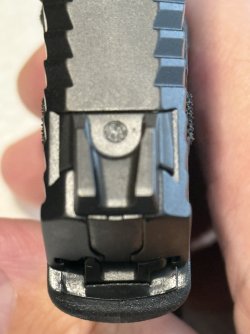Bon Vivant
Member
- Joined
- Jul 17, 2025
- Messages
- 9
- Reaction score
- 6
Just purchased a Bodyguard 2.0 as an EDC front pocket carry. My Keltec P380 was too limited with 6+1 and violently snappy and my SIG P365 SAS was too bulky. Now I know all pistols need break in, been shooting for close to 60 years, but this gun out of the box is not risk worthy. I can't carry it in condition 1 because the ambi safety is so damn hard I cracked a finger nail trying to work it. Racking takes double the effort of the above mentioned guns so carrying in condition 3 is futile. And with all my strength I could not get the 12th bullet in the mag...barely succeeded with my Uplula. And lastly, the 12 rd mag needed brute strength to get it to lock in. Both my SIG and Keltec were good to go out of the box and then just got better with break in, How many rounds will this thing need to be workable?
And on an aside, I noted many people complaining the gun shoots to the left. I found my rear sight drifted to the right from the factory, what is that all about?
And on an aside, I noted many people complaining the gun shoots to the left. I found my rear sight drifted to the right from the factory, what is that all about?

Last edited:
